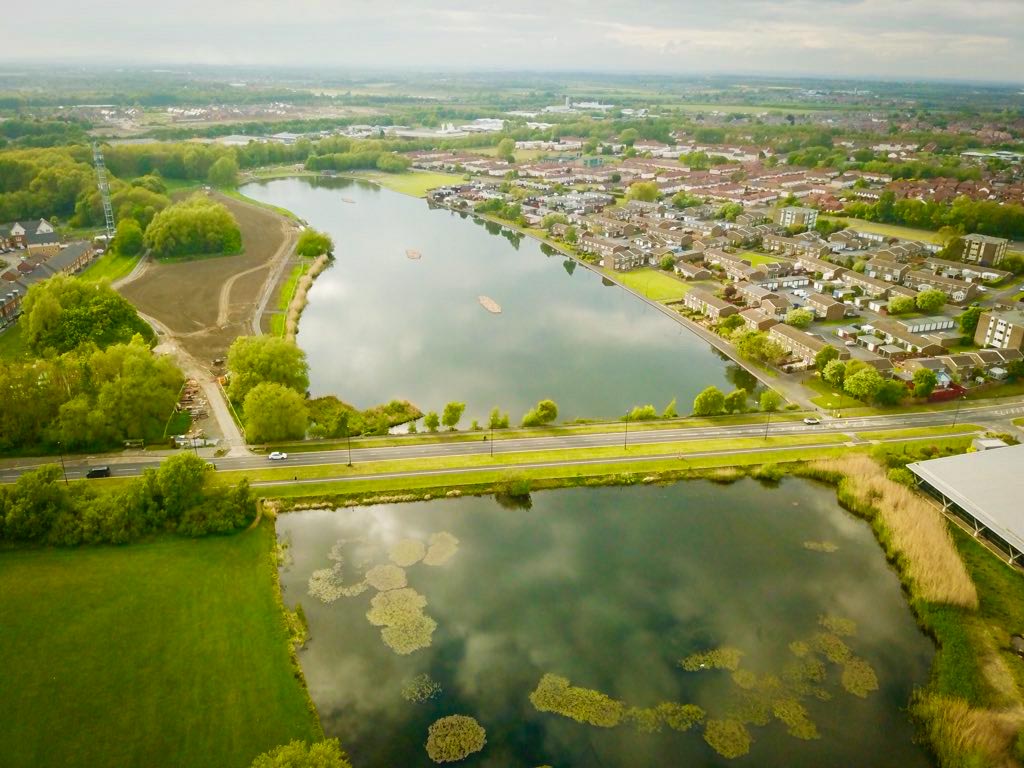Keeping the water flowing is a complex business. Water companies can take a lot of flak if they appear to fail in their responsibilities. But, as we learn from the experiences of Northumbrian Water Group, the lengths they really go to may be underestimated, while we as customers could be doing more. In this article, we learn where the responsibilities sit, and how the two sides can work together to avoid difficulties, save money, and preserve water health.
Since water services were privatised in the UK in 1989, investment has roughly doubled, to approximately £10 billion per annum (2020 figures).
Water UK’s former Chief Executive, Michael Roberts claimed that this has resulted in a litany of improvements, such as “cutting leakage, keeping bills affordable, improving water quality, and cleaning up rivers” – as well as giving us more attractive beaches.
There is another side though. Three billion litres of water are lost each day to leakage and with water company bosses’ bonuses tied closely to performance, customers expect better.
A nationwide network of ageing combined sewers is also a cause for concern. With extreme weather conditions increasingly frequent, infrastructure is overstretched, resulting in untreated waste being discharged into natural waterways. This happened an average of 825 times each day in 2022, nationally – that’s 300,000 in total; a situation described as “totally unacceptable” by the Environment Agency, with similar criticism from the public.
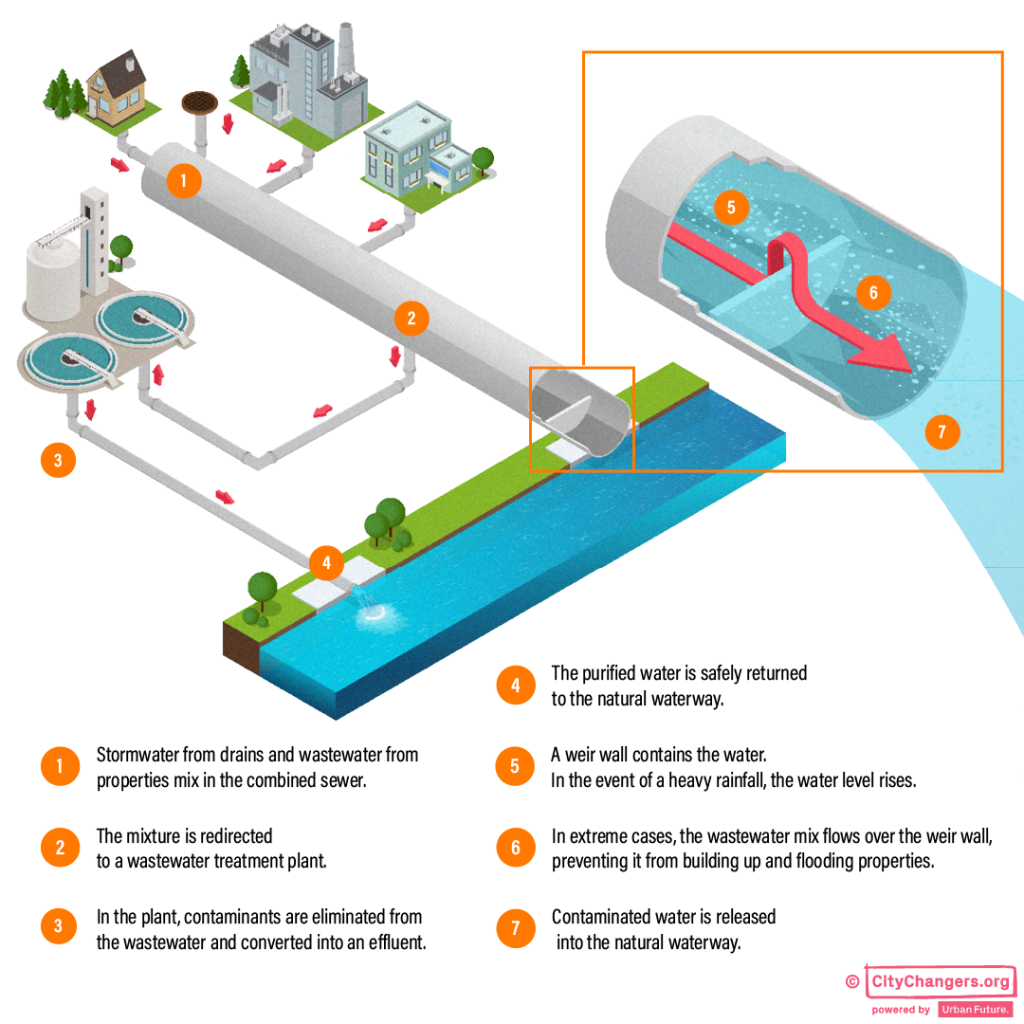
Embracing the Challenge: A Transparent Approach to Water
As in many sectors and professions, private water companies are having to adapt to changing climate conditions, rising demand, and increasing scrutiny.
Northumbrian Water Group (NWG) has stepped up to this challenge by more than doubling investment in their network for the 2025-2030 period.
Their plans for a new £4.5bn Capital Delivery programme will tackle these key challenges by:
- improving infrastructure
- bringing in top talent
- investing in better monitoring.
This builds on their existing efforts to create greater public awareness of spills and accountability – a level of transparency that has seemingly led to the perception of a rise in wastewater discharges. In actual fact, they have invested heavily to significantly cut pollution in their networks.
An Ethical Water Company
Carol Cairns explains that this is all part of Northumbrian Water Group’s aim to be a national leader in environmental care, asset management, and customer service.
Thanks to a holistic and sustained approach to change operational activities, she says that Northumbrian Water has managed to reduce operational emissions from more than 250,000 tonnes of CO2 in 2010 to just 23,000 tonnes in 2022.
They were also the first of the UK’s water companies to use their entire stock of sewage sludge to create energy, and since 2018 NWG has obtained 100% of its purchased energy from renewable supplies.
This led to Northumbrian Water being recognised by The World’s Most Ethical Companies and rated among the best performing water companies in the UK.
Water Management – A Long-term Strategy
Before changing roles in early 2023, Carol was NWG’s strategic planning manager for wastewater services.

Effectively, this CityChanger had to forecast what the future wastewater needs would be for approximately 2.5 million people and setup projects to meet them.
This requires a long-term outlook – anything from five years plus!
Projecting customers’ needs so far ahead was made all the harder by a changing climate.
The northeast of England, where Carol works, gets a lot of precipitation, and she has seen it rise in recent years, in both frequency and intensity.
“I would have a lot of focus particularly on flooding and pollution, and around what investment we need to make our systems resilient and effective.”
The Wastewater Challenge
Not all natural waterways or human infrastructure can cope with the short, heavy storms that now inundate the region.
Generally, extreme weather is making more British properties vulnerable to flooding.
It’s not clean rainwater either. Stormwater runs off city surfaces, rivers break their banks, and sewers overflow. These all threaten to flush filth, pollution, silt, and effluents into people’s homes.
Relief valves in sewer networks are designed to prevent this, but in extreme weather conditions, that mechanism is overwhelmed.
Carol appears personally aggrieved at the thought of internal flooding, which can occur in these situations: “We totally recognise it’s the worst service failure that people can experience.”
So, what’s the answer? Well, reimagining infrastructure and greater community cooperation has proved useful.
The Benefits of Taking a Basin Approach
In collaboration with local partners, NWG has built the Killingworth sustainable drainage system.
The resulting reservoir holds excess water in times of downpours, helping to control flooding – as well as providing a refuge for wildlife.
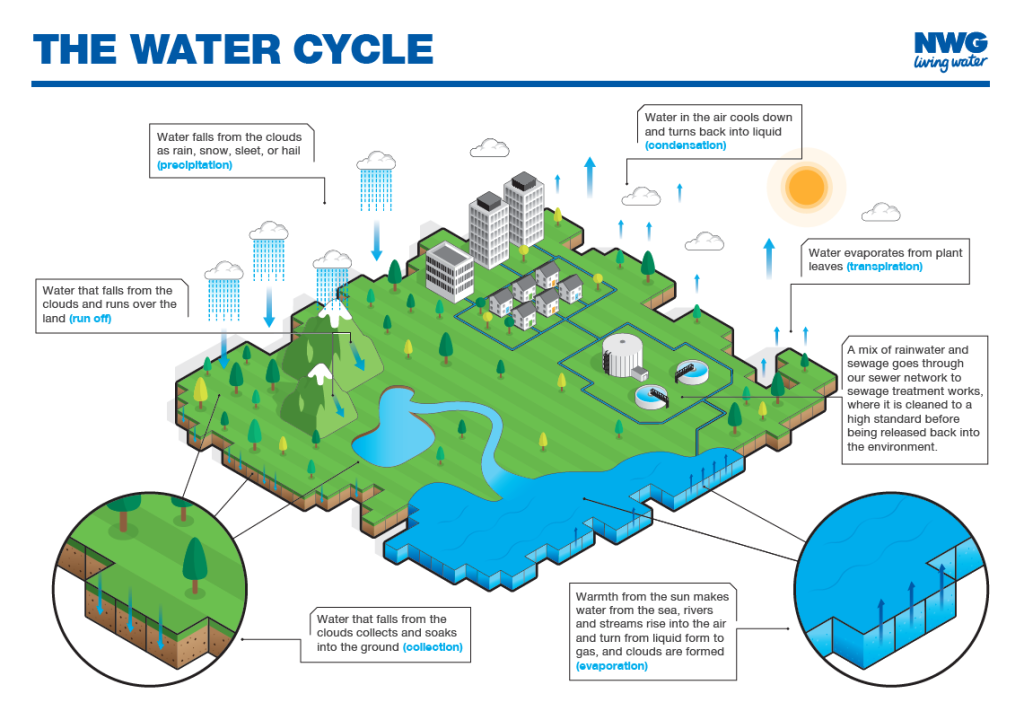
Overflow basins are costly, though, and don’t address the causes of flooding. Plus, we pay extra in terms of concrete, carbon emissions, habitat destruction, and – as a result – reputational damage.
What the team behind Killingworth proved was that, as Carol says, holistic solutions offer up “different ways of doing things”. Often it just needs the right motivation to be in place. So, when a natural disaster hit the northeast of England, another opportunity for change presented itself.
Strength in Numbers
In June 2012, two months’ worth of rain fell in the region in just two hours.
The “tsunami” of flooding, as Carol describes it, brought transport to a standstill. The electricity supply cut out, and residents had to be evacuated from their homes. This incident is remembered as Thunder Thursday.
Up to this point, municipal departments and services had dealt with flooding on their own terms. This time, the silo working of departments dealing with housing, fluvial matters, highways, sewage, etc. magnified the limitations of this response in identifying and mitigating the risks.
This prompted NWG to team up with local authorities and the Environment Agency to form the Northumbria Integrated Drainage Partnership. Combined, their budget came to £9m and applied to solutions collaboratively had a far greater effect, reducing the flood risk to around 1,000 homes and improved local water quality.
“We take it as business as usual now,” Carol reflects. “But, at the time, it was quite a leading innovation to bring all those parties together.”
But preventing flooding isn’t only about getting the right infrastructure in place – it also needs to be healthy to function best. For wastewater networks, we all have that duty of care.
Northumbrian Water Group’s Secret Weapon – Public Collaboration
It isn’t easy to persuade paying customers to step up and do their bit. So, perhaps NWG’s strategic crowning glory is in how they have rallied the public to behave more responsibly with their wastewater.
Despite official guidance and greater awareness generally, Carol notes that households and businesses still pour fats, oils, and greases down the drain.
This can result in sewers being clogged by FOGbergs – or fatbergs, as they are also known – an impenetrable amalgam of congealed wastes. This prevents stormwater, surface runoff, and household waste in the pipes from reaching their intended destination. In serious cases, it causes flooding.
Then there’s all the junk we flush.
Household sanitary pipes are designed to remove human waste and – in some regions of the world, like the UK – toilet paper. But putting anything else down there can be a costly mistake.
Bin the Wipe
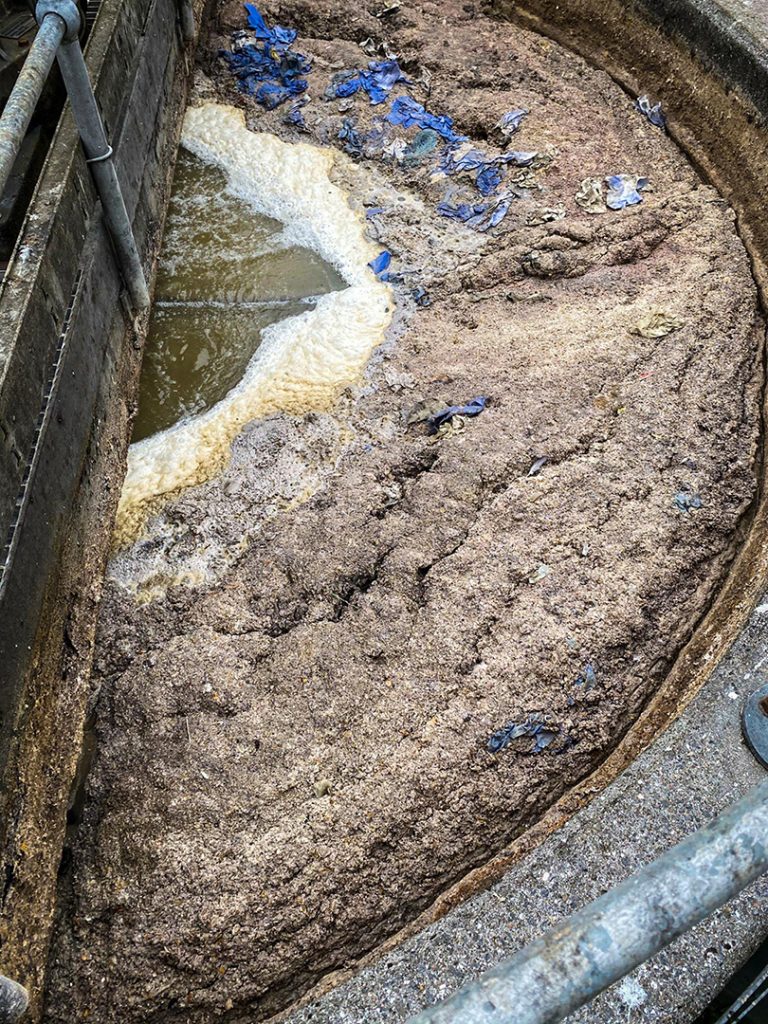
According to Carol, wipes are public enemy number one! In England’s northeast, they account for 60% of blockages.
They look like toilet paper, but most are made from single-use plastic. Sneaky marketers often label them as flushable only adding to the confusion.
Image credit: Northumbrian Water Group
“Obviously, they don’t degrade,” Carol explains. “They get caught along the network, they get to a pumping station and clog the pump.”
Then treatment facilities also have a blockage to rectify, which is expensive.
“And that’s just the ones that make it to the treatment works – many more clog pipes and cause blockages, and these can force waste back into people’s homes, or out through manholes into the environment. They can even be the cause of storm overflow spills!”
This prompted NWG to put together a dedicated liaison team to educate customers about responsible flushing.
Instigated by Wastewater and Corporate Communications, NWG launched Bin the Wipe campaign with the powerful message that “not flushing wipes is a free, instant change that we can all make”.
No cost and instant results? These are levers that work. The public responded positively. All the same, success wasn’t left to chance.
Identify the Culprits, Support Them Regardless
NWG led a campaign targeting the postcodes where most blockages occurred. Based on data analysis, they focused “comms, posters on bus stops, knocks on the door” in these hotspots.
To the remaining persistent offenders – of which there were not many – NWG sent letters with a friendly reminder of the Water Industry Act 1991. This legislation makes it possible for water companies to prosecute households for disposing “anything into the sewer that can impede the flow of the waste”.
But knowledge sometimes only goes so far. Giving people the means to change can be much more effective.
Providing free bins for bathroom rubbish in trial areas “had a really big impact” on households’ behaviour, Carol reports.
On the back of this success, Bin the Wipe has been picked up by Water UK and other Water Supply and Consulting (WASC) companies and rolled out nationally.
Leaky Loos
It is worth mentioning that Northumbrian Water Group’s 3,000 employees serve about 4.5 million customers split across two disparate regions of England, about 240 miles apart.
NWG inherited this odd situation from the former owners, and it means that they also serve water to customers in Suffolk and Essex – although not wastewater services.
Both regions have their own characteristics. Whereas Northumbria has an abundance of water, East Anglia is a drought region.
But the lessons learnt from Bin the Wipe work here too. The Leaky Loos campaign encourages individuals to make simple changes in their household to improve water efficiency.
“Again, we take a targeted approach. We go into a town and give that town a water efficiency education: someone will come to your house, do a bit of an audit, and then give you some tips.” Fixing dripping taps, for example, or adding bricks to the cistern to reduce how much water is used to flush.
This can save up to 215 litres a day per toilet. Great for NWG, but also for customers who are set to save around £200 a year.
A Recipe for Success: Get Communities Involved
Community engagement is a theme that runs through NWG’s activities, and it seems to get results.
Every five years, private water companies submit an environment improvement plan, or Water Industry National Environment Programme (WINEP), to the UK regulator, Ofwat. This ensures that they are making efforts to meet up-to-date legislation on water quality.
They also have a legal obligation to host a customer challenge group which reviews and feeds back on water companies’ plans.
NWG takes these obligations a step further. They see these mechanisms as a chance to form a business plan that truly meets the needs and expectations of their community.
Participants in their customer challenge group – or Water Forum – are invited to “challenge and scrutinise our plans,” Carol says, thereby adding another “element of independent challenge”.
And in the lead up to the WINEP, Northumbrian Water’s ever-active customer research team make a concerted effort to push community engagement “to understand what’s important” because this can change considerably from one five-year period to the next.
Then there’s Northumbrian Water Group’s annual Innovation Festival.
Each July, a couple of thousand people come together to work for a week on water-based challenges, hear from prominent speakers, and enjoy water-themed games.
This hands NWG a chance to interact directly with their stakeholders: corporate partners, representatives from regulators and water companies, schools, academics, the media, and – maybe most importantly of all – their customers.
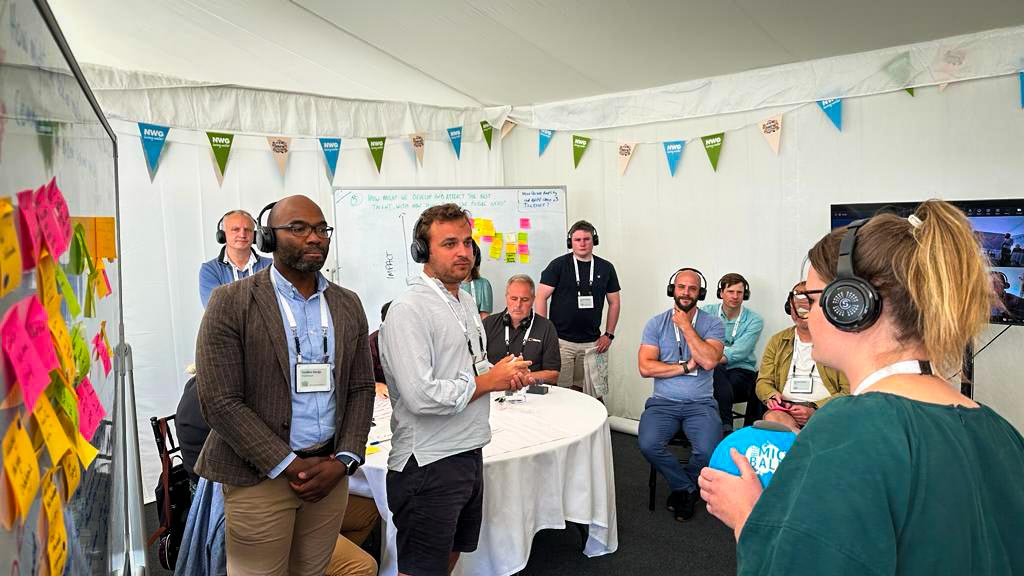
“A lot of change in the way we work has come from that,” Carol says proudly.
Given that NWG was rated favourably in the 2022 Environmental Performance Assessment – recognising good practice and a sustained approach to ongoing improvement – it seems that water companies have a lot to gain from embracing both change and their communities.

